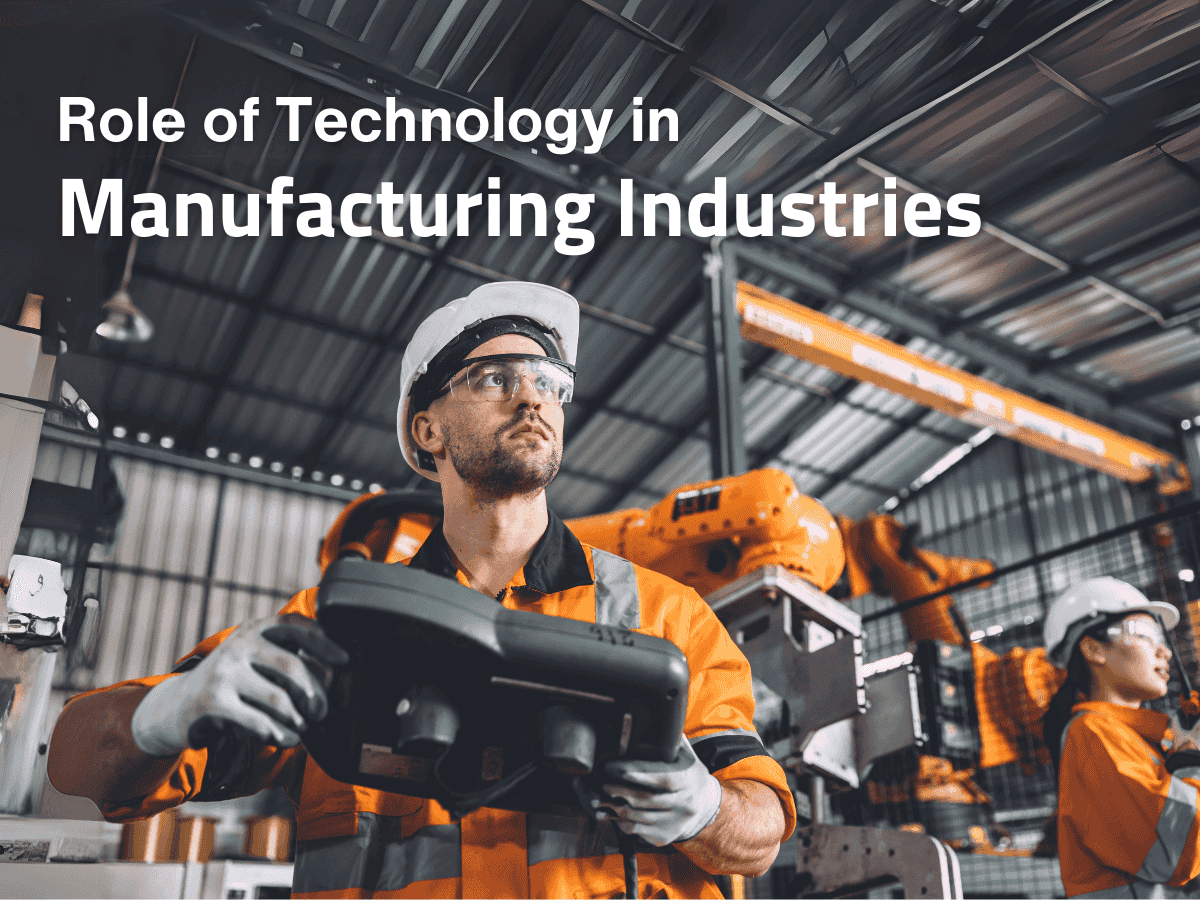ceat-speciality:blogs-tags/all,ceat-speciality:blogs-tags/technology
Exploring the Role of Technology in Manufacturing Industries
Thu, 30 Jan 2025 | PRODUCTS
In today’s fast-evolving world, technology plays a pivotal role in transforming industries, and nowhere is this more evident than in manufacturing. Over the past few decades, advancements in technology have revolutionised the way products are designed, created, and distributed.
From automation to digitalisation, the role of technology in manufacturing is profound, driving increased efficiency, reducing costs, and creating new opportunities for innovation. In this blog post, we’ll explore how different technologies are reshaping the manufacturing landscape and their impact on the sector.
Automation: The Backbone of Modern Manufacturing
One of the most significant technological advancements in manufacturing is the widespread adoption of automation. Automation helps businesses perform tasks that are repetitive, dangerous, or physically demanding, thereby reducing human error and enhancing productivity.
The Internet of Things (IoT): Smart Manufacturing
The Internet of Things (IoT) has brought a new level of intelligence to manufacturing by connecting machines, devices, and sensors across the entire production process. Through the use of IoT, manufacturers can monitor equipment in real-time, gather vast amounts of data, and analyse it to improve operational efficiency.
Sensors embedded in machines and equipment provide valuable insights into their performance, helping manufacturers predict when maintenance is needed, thereby preventing costly downtime. This concept, often referred to as "predictive maintenance," can significantly extend the lifespan of machinery and reduce repair costs.
Additionally, IoT enables manufacturers to create smart factories where systems are interconnected and can communicate with each other. This level of connectivity facilitates automated decision-making, process optimization, and quick adjustments to production schedules based on real-time data. As a result, IoT is helping manufacturers reduce waste, improve supply chain management, and enhance overall production efficiency.
Artificial Intelligence and Machine Learning: Optimising Production Processes
Artificial Intelligence (AI) and Machine Learning (ML) are increasingly being integrated into manufacturing systems to optimise production processes. AI algorithms can analyse vast amounts of data to identify patterns, predict outcomes, and make decisions autonomously.
For instance, AI-driven systems can detect defects in products during the production process by analysing visual data from cameras and sensors. This enables manufacturers to catch quality issues early, reducing scrap rates and improving product consistency. Additionally, AI-powered systems can optimise supply chain logistics, forecasting demand more accurately and ensuring that raw materials are always available when needed.
Machine learning, a subset of AI, allows systems to learn from historical data and improve over time. By analysing production data, machine learning models can identify inefficiencies, suggest process improvements, and even optimize the layout of manufacturing plants to reduce bottlenecks.
Digital Twin Technology: Enhancing Efficiency Through Simulation
Digital twin technology is an innovative concept that involves creating a virtual replica of a physical asset, process, or system. This digital model can simulate real-world conditions, enabling manufacturers to monitor and analyse performance in real-time.
In manufacturing, digital twins are used to simulate entire production lines, machinery, and even entire plants. This allows manufacturers to test and optimise processes before making any physical changes, reducing the risk of costly mistakes.
By analysing the data from the digital twin, manufacturers can identify inefficiencies, anticipate potential failures, and optimise production schedules. This technology also plays a key role in improving product design, as engineers can simulate how a product will perform under different conditions before it goes into production.
Cloud Computing: Data Management and Collaboration
Cloud computing has transformed how manufacturing companies store, manage, and share data. By moving data to the cloud, manufacturers can access real-time information from anywhere, facilitating collaboration and decision-making across different locations.
The cloud allows manufacturers to store massive amounts of data generated by IoT devices, sensors, and production equipment without the need for expensive on-premise infrastructure. This enables manufacturers to scale their operations and access advanced analytics tools without having to invest in complex IT systems.
Moreover, cloud-based solutions promote collaboration among teams across various functions, enabling real-time communication and data sharing. This leads to better coordination between production, design, and supply chain teams, improving overall operational efficiency.
Conclusion: The Future of Manufacturing
Technology is at the heart of the transformation happening in manufacturing industries today. At the same time, this technological revolution also brings challenges, including the need for skilled workers who can operate and maintain advanced systems, as well as the need for robust cybersecurity measures to protect critical data.
Nevertheless, the future of manufacturing is undoubtedly tied to the ongoing integration of technology, and those who leverage these innovations effectively will lead the way in shaping the industry’s future.
By embracing automation, IoT, AI, and other cutting-edge technologies, manufacturers can unlock new levels of efficiency, customisation, and sustainability, ensuring they are well-positioned to thrive in the years ahead. CEAT Specialty's premium tyres are perfectly suited to the latest technologies in manufacturing industries.




















